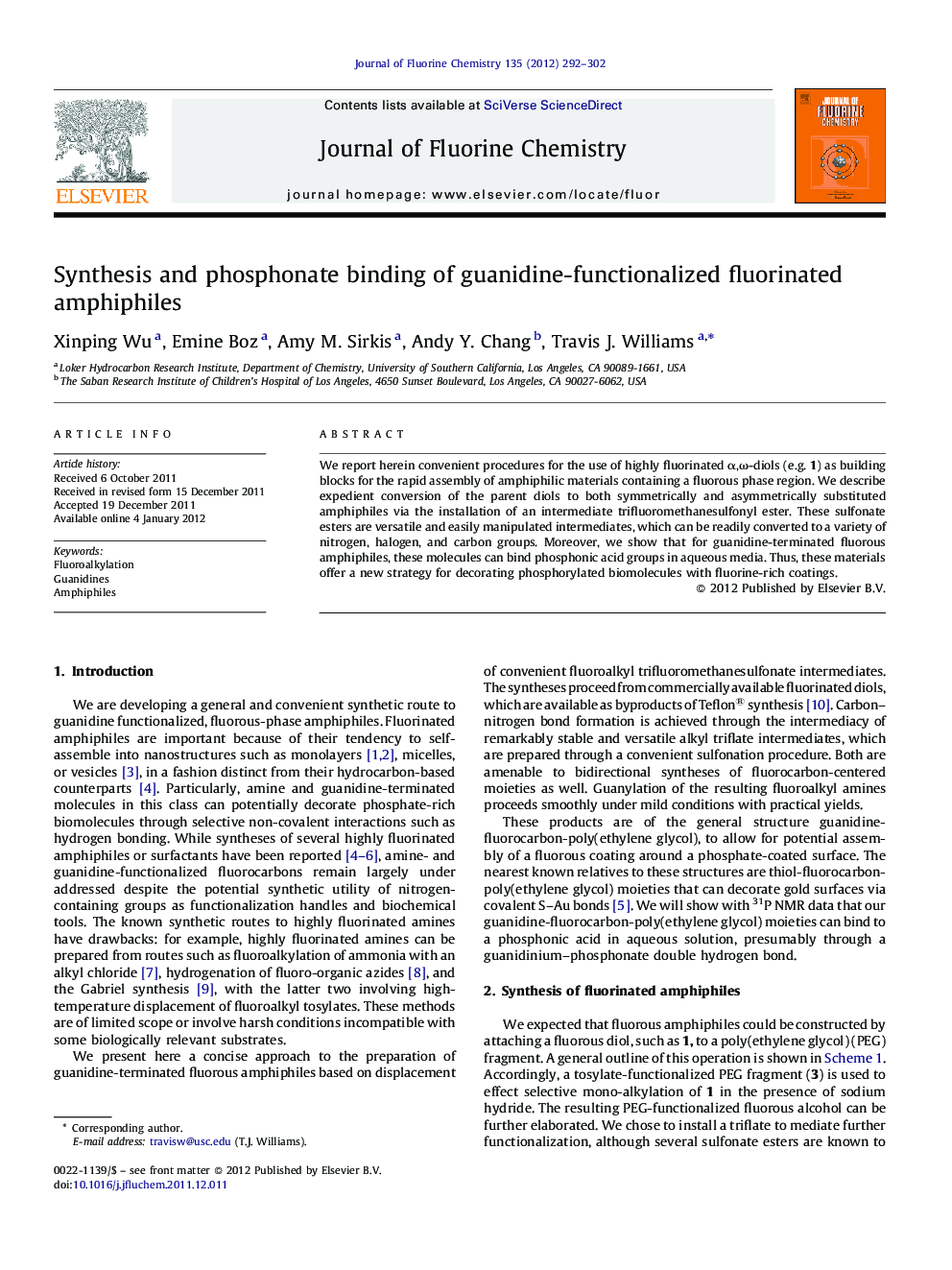| Article ID | Journal | Published Year | Pages | File Type |
|---|---|---|---|---|
| 1314744 | Journal of Fluorine Chemistry | 2012 | 11 Pages |
We report herein convenient procedures for the use of highly fluorinated α,ω-diols (e.g. 1) as building blocks for the rapid assembly of amphiphilic materials containing a fluorous phase region. We describe expedient conversion of the parent diols to both symmetrically and asymmetrically substituted amphiphiles via the installation of an intermediate trifluoromethanesulfonyl ester. These sulfonate esters are versatile and easily manipulated intermediates, which can be readily converted to a variety of nitrogen, halogen, and carbon groups. Moreover, we show that for guanidine-terminated fluorous amphiphiles, these molecules can bind phosphonic acid groups in aqueous media. Thus, these materials offer a new strategy for decorating phosphorylated biomolecules with fluorine-rich coatings.
Graphical abstractWe report convenient procedures for the use of highly fluorinated α,ω-diols as building blocks for the rapid assembly of amphiphilic materials containing a fluorous phase region.Figure optionsDownload full-size imageDownload as PowerPoint slideHighlights► Fluorinated α,ω-diols converted to amphiphilic materials through convenient procedures. ► Conversion can be symmetrical and asymmetrical. ► Guanidine-terminated fluorous amphiphiles can bind to phosphonic acid groups in aqueous media, which offers a new strategy for decorating phosphorylated biomolecules with fluorine-rich coating.
